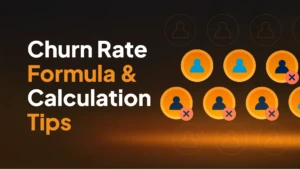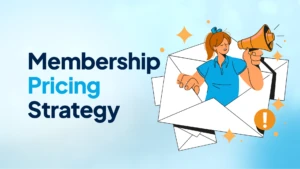Membership businesses thrive on recurring revenue, but they also face a unique challenge: managing a constant flow of invoices and payments.
Without automation, these processes can quickly become bottlenecks, leading to delayed cash flow, frustrated members, and overworked staff.
Invoice automation changes the game by digitizing and streamlining repetitive tasks, allowing teams to focus on growth instead of paperwork.
In this guide, we will explore what automated invoice processing is, why it matters, and how membership businesses can adopt it successfully in 2026.
Invoice Automation: TL;DR
- Invoice automation simplifies billing, reduces errors, and speeds up payments.
- Membership businesses can automate tasks like data entry, approvals, and recurring payments.
- Key benefits include operational efficiency, improved cash flow, and better compliance.
- The right tools and processes make invoice management automation scalable and secure.
What Is Automated Invoice Processing?
Automated invoice processing refers to the use of software tools to manage invoices without heavy human intervention.
Instead of relying on paper invoices or manual data entry, systems extract invoice details digitally, route them through pre-defined approval workflows, and schedule payments automatically.
For membership businesses that deal with recurring fees, this process ensures accuracy, consistency, and efficiency.
Unlike traditional invoicing, which often suffers from errors or delays, automated invoicing systems provide real-time visibility into financial activity.
This makes it easier to track income, reconcile payments, and forecast revenue.
Benefits of Automated Invoice Processing
1. Operational Agility
One of the most significant advantages of automation is the ability to respond quickly to financial demands.
Membership businesses often need to process hundreds or even thousands of recurring payments each month.
With automation, tasks that once took hours can now be completed in minutes.
This agility improves cash flow and enhances member satisfaction, as invoices and receipts are sent promptly and without errors.
Faster invoice processing also allows finance teams to focus on strategy rather than repetitive tasks.
2. Financial Forecasting and Liquidity Management
Accurate financial forecasting depends on having real-time data.
Accurate financial forecasting depends on having real-time data. Automation also helps when refining your membership pricing strategy, since consistent billing cycles provide the data needed for smarter decisions.
Automated invoicing provides membership businesses with up-to-date records of all billing and payment activities, helping leaders make informed decisions about budgets, liquidity, and investments.
With automation, predicting future revenue becomes more reliable because the system ensures consistent billing cycles and reduces the risk of missed or delayed payments.
This visibility is crucial for businesses planning expansions, adjusting pricing strategies, or seeking external funding.
This visibility is crucial for businesses planning expansions, adjusting pricing strategies, or seeking external funding. It also supports scaling into new membership business ideas with confidence.
3. Fraud Detection and Compliance
Fraudulent invoices and payment errors are persistent risks in manual systems.
By digitizing and centralizing all invoices, automation introduces a layer of transparency and security.
Membership businesses can configure their systems to flag duplicate invoices, enforce multi-level approval workflows, and maintain detailed audit trails.
These features not only prevent fraud but also ensure compliance with financial regulations.
For businesses operating globally, invoice-to-pay automation can adapt to local tax requirements and currency rules, reducing the risk of costly compliance mistakes.
4. Cost Reduction
Manual invoice management consumes time and labor, often involving multiple staff members across departments.
By adopting automated invoicing, businesses reduce administrative overhead and the costs associated with correcting errors.
Over time, the savings compound as fewer resources are required for billing tasks.
The reduced reliance on manual work allows businesses to reallocate staff toward higher-value activities, such as improving member engagement or developing new service offerings.
Examples of Invoice Tasks Membership Businesses Can Automate
1. Data Capture and Entry
Extracting data from invoices is one of the most time-consuming tasks for finance teams.
Automation tools can scan and interpret invoice data, such as amounts, dates, and member details, and automatically input this information into the accounting system.
This eliminates human error and speeds up the overall workflow.
2. Invoice Matching
Membership businesses often need to verify that invoices align with purchase orders or receipts.
Automated systems handle this verification instantly, matching details across documents and highlighting discrepancies for review.
This ensures that payments are only made when all records are consistent, protecting businesses from overpayments or fraudulent charges.
3. Duplicate Detection
Duplicate invoices can be difficult to spot in a manual process, especially when dealing with high volumes.
Automated invoice management systems are programmed to identify duplicates quickly.
By flagging these before payment, businesses prevent unnecessary cash outflows and improve overall financial accuracy.
4. Approval Workflows
Approval delays are a common cause of late payments.
With invoice workflow automation, invoices are automatically routed to the appropriate decision-makers based on pre-set rules.
Notifications and reminders keep the process moving, ensuring invoices are approved in a timely manner.
This structured approach reduces bottlenecks and maintains consistent payment schedules.
5. Recurring Billing
For membership businesses, recurring billing is essential.
Automating invoicing for subscriptions ensures that members are billed consistently and on time, without requiring manual intervention from staff.
This reliability strengthens trust with members while securing predictable revenue for the organization.
How to Automate Invoice Processing: Step-by-Step Guide
1. Assess Current Processes
Before implementing automation, businesses should evaluate their existing invoice workflows.
This includes identifying bottlenecks, areas of duplication, and error-prone steps.
Understanding the current state provides a roadmap for choosing the right automation solution and ensures improvements are targeted where they will have the greatest impact.
2. Select the Right Automation Tool
Not all automation platforms are created equal.
Membership businesses should look for software that integrates seamlessly with their membership management systems, CRMs, and accounting platforms.
Features like customizable invoice templates, recurring billing, and multi-currency support can make a significant difference in long-term efficiency.
Choosing the right tool lays the foundation for a smooth transition.
Membership businesses should look for the best membership management software that integrates seamlessly with CRMs, accounting platforms, and payment gateways.
3. Standardize Templates and Schedules
Consistency is key in invoice automation.
By creating standardized templates and schedules, businesses ensure that invoices are uniform, accurate, and sent on time.
This reduces confusion for members and simplifies reporting for staff.
Automated invoicing systems allow customization to reflect brand identity while still enforcing consistency across every billing cycle.
4. Train Staff and Address Exceptions
While automation reduces manual work, staff still need to understand how the system operates and how to handle exceptions.
Training is crucial for ensuring adoption and building confidence.
Employees should be familiar with resolving flagged errors, managing unusual cases, and using reporting tools.
Clear communication during rollout minimizes resistance and supports long-term success.
5. Monitor and Optimize Performance
Invoice automation is not a one-time project.
It requires ongoing monitoring and refinement.
Businesses should regularly review performance metrics such as processing time, error rates, and payment cycles.
By analyzing these results, organizations can make adjustments to workflows, add new features, and refine processes.
Continuous optimization ensures that automation remains aligned with evolving business needs.
Extra Tips for Successful Invoice Processing Automation
1. Start Small and Scale Gradually
Implementing automation across every process at once can overwhelm teams.
A phased approach allows businesses to start with one area, such as recurring billing, and gradually expand.
This minimizes risk and builds confidence as staff see the benefits firsthand.
2. Integrate Across Systems
Automation is most effective when it works in harmony with other business tools.
Membership businesses should prioritize solutions that integrate with CRMs, ERPs, and payment gateways.
These integrations reduce data silos, improve reporting accuracy, and create a seamless financial ecosystem.
3. Prioritize Security and Compliance
Financial data security is non-negotiable.
When adopting invoice payment automation, businesses must ensure that systems include features such as encryption, access controls, and audit logs.
This protects sensitive member information and ensures compliance with financial regulations, particularly for businesses operating in multiple regions.
Automate Invoicing with Our Membership Software
Stop wasting time on manual billing. Member Solutions streamlines recurring invoicing, approval workflows, and payment tracking — all in one place.
With automation, you’ll reduce errors, save hours each month, and deliver a smoother experience for your members.
Book a demo today and see how Member Solutions turns invoicing into a growth advantage for your organization.
Key Takeaways About Automatic Invoice Processing
Invoice automation enables membership businesses to operate with greater efficiency, accuracy, and transparency.
By replacing manual processes with automated systems, organizations can reduce costs, improve forecasting, and strengthen compliance.
Most importantly, automation enhances the member experience by ensuring that billing is reliable and hassle-free.
FAQs
How to integrate automated invoice processing with other business systems?
Integration is achieved through APIs or built-in connectors that allow the invoicing platform to communicate with CRMs, ERPs, and payment gateways.
This seamless connection ensures that financial data is accurate across systems, reducing duplication and eliminating the need for manual reconciliation.
What are the most common challenges in automated invoice processing?
Membership businesses often encounter challenges such as poor data quality, system compatibility issues, or resistance from staff.
Addressing these early by cleaning data, choosing compatible tools, and providing training helps mitigate risks and ensures a smoother transition.
Is automated invoice processing secure?
Yes, modern systems are designed with robust security measures such as data encryption, role-based access, and continuous monitoring.
These features safeguard sensitive financial information and ensure compliance with global data protection regulations.
Can invoice automation handle global suppliers?
Advanced platforms are equipped to handle multi-currency payments, international tax compliance, and region-specific regulations.
This makes invoice to pay automation an excellent solution for membership businesses with international members or vendors.
What is an automated invoice?
An automated invoice is generated and processed digitally without requiring manual input.
From data capture to payment, the process runs through pre-set rules that ensure speed, accuracy, and transparency.
What is a smart invoice system?
A smart invoice system goes beyond automation by incorporating artificial intelligence.
These systems can detect anomalies, predict payment delays, and provide insights that help businesses optimize financial operations.




